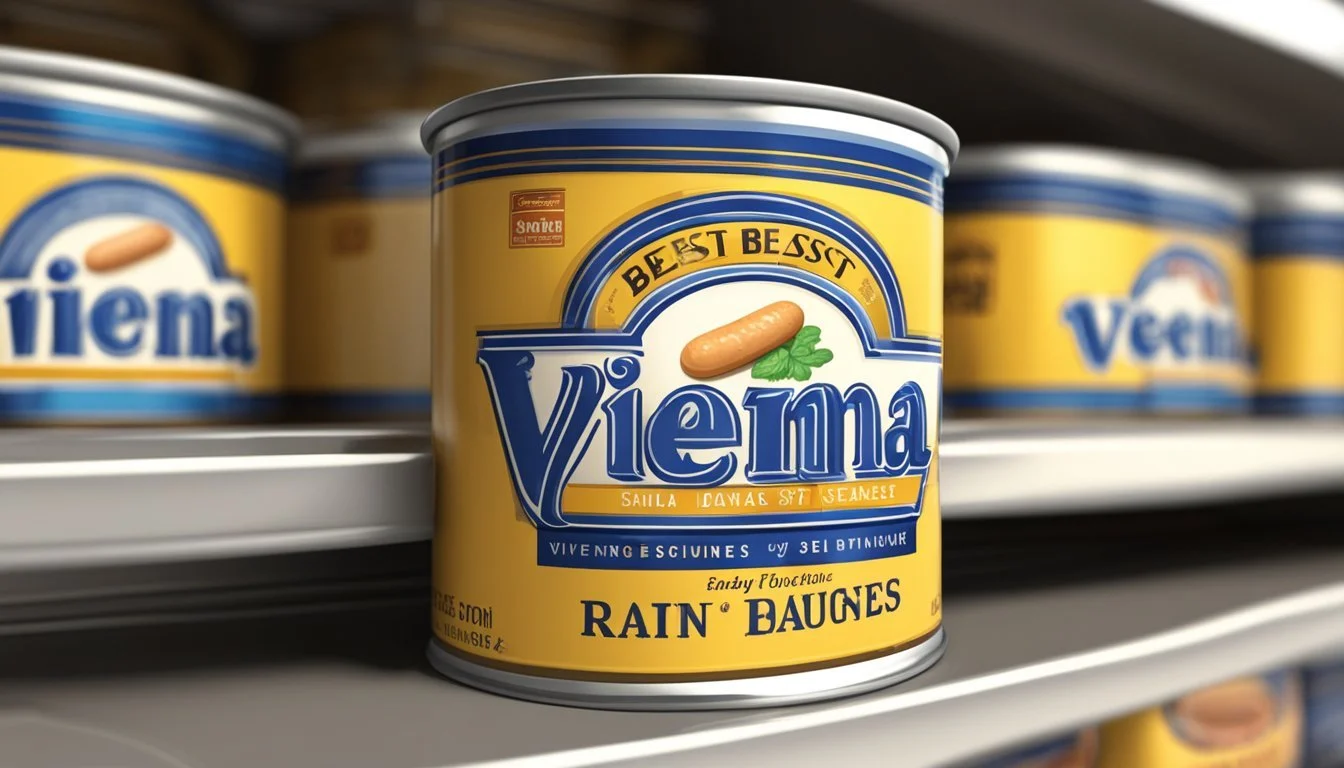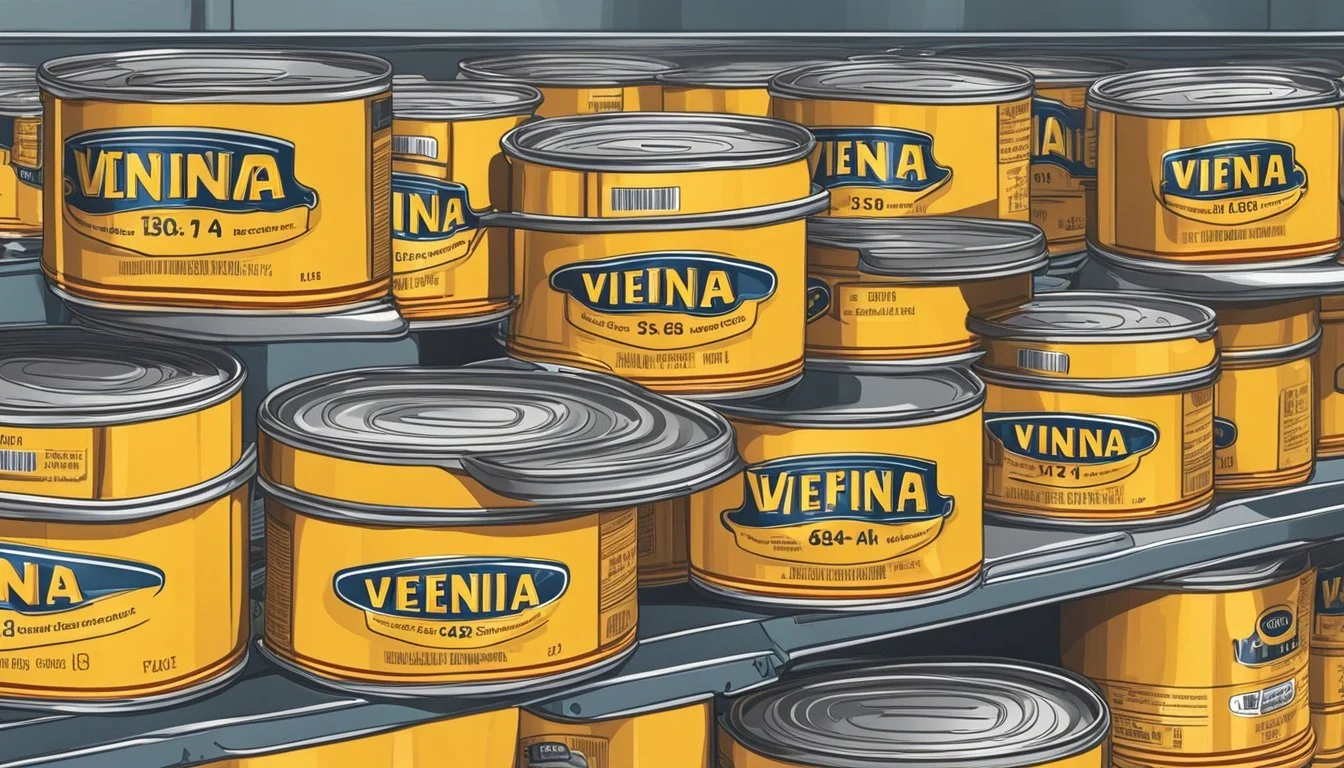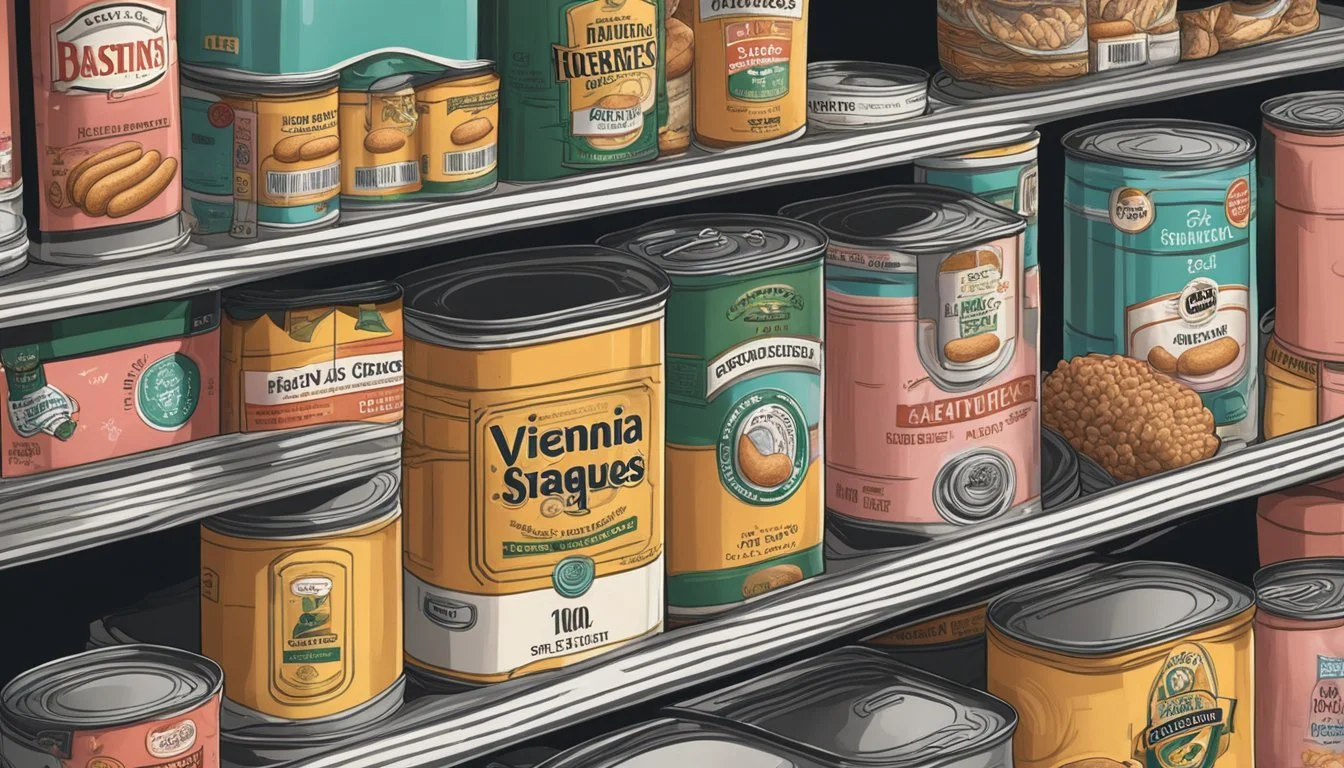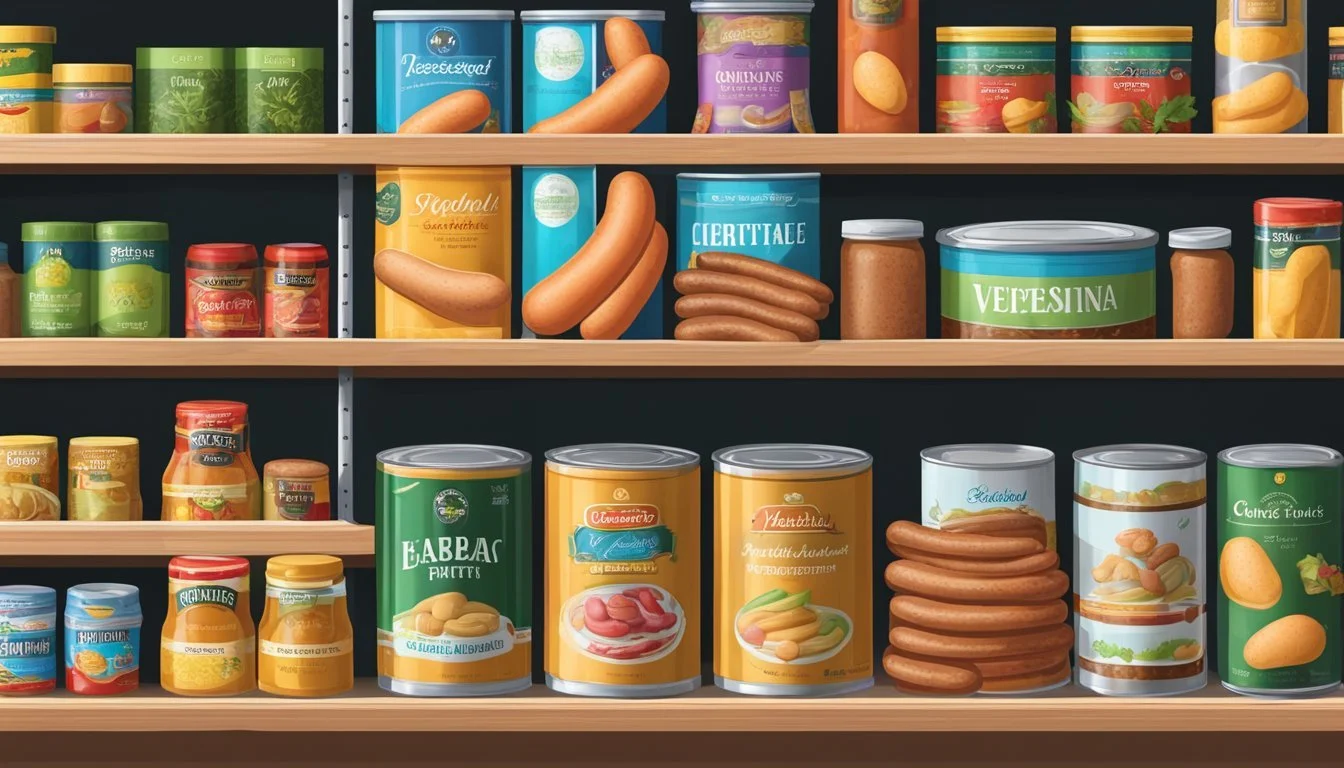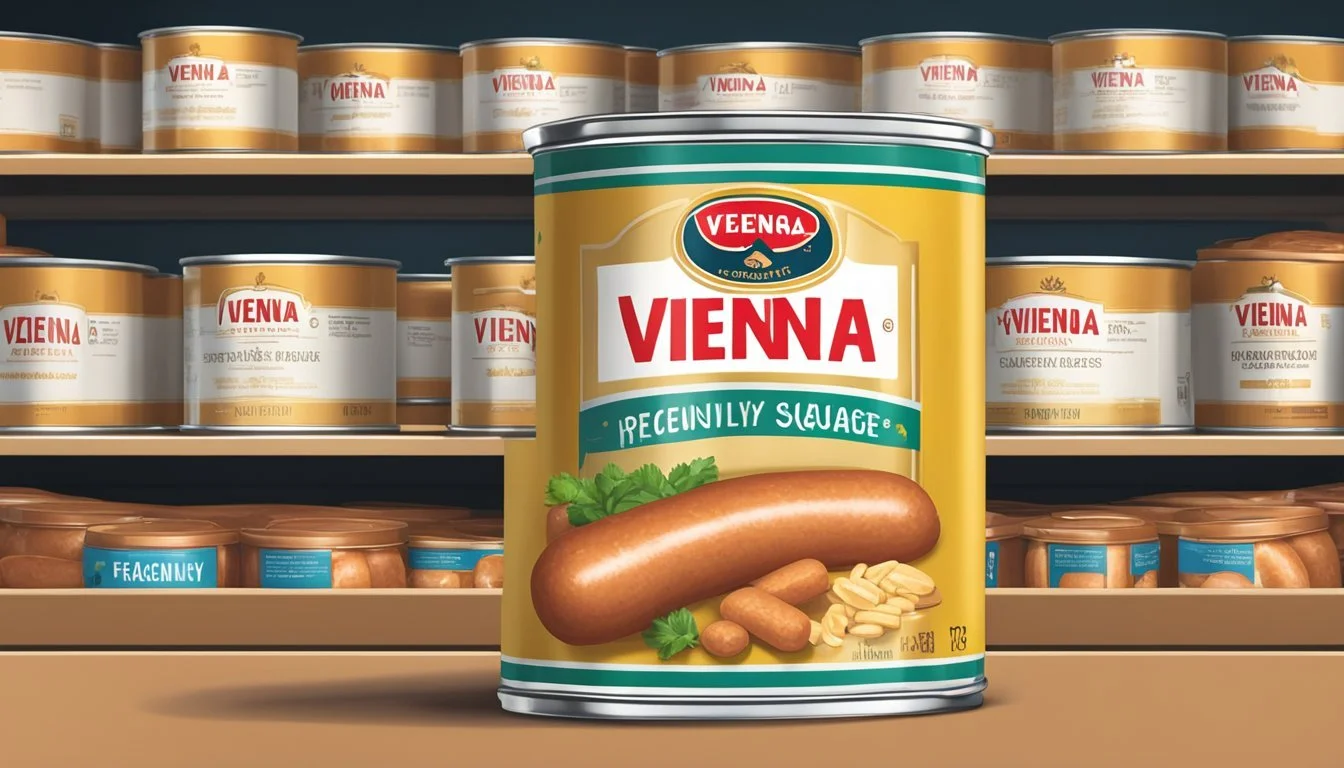How Long Do Vienna Sausages Last?
Shelf Life and Storage Insights
Vienna sausages are a type of canned meat that have become a convenient snack for many people due to their ease of storage and preparation. These small, pre-cooked sausages typically come in a can and are known for their long shelf life compared to fresh meats. Understanding the storage and shelf life of Vienna sausages is essential for maintaining their quality and ensuring safety when consumed.
The shelf life of a can of Vienna sausages varies depending on several factors including storage conditions and whether the can remains unopened. An unopened can of Vienna sausages can generally last for years under the right conditions – kept in a cool, dry place, and away from direct sunlight. Once opened, the contents should be refrigerated and are best consumed within a few weeks to retain their ideal taste and texture. It's important to always inspect the can before use for signs of damage, such as leaking, rusting, or bulging, which may indicate spoilage.
Understanding Vienna Sausages
Vienna sausages are a type of pre-cooked meat product typically made from a combination of pork, chicken, and beef. They are well-known for their soft texture and mild taste, often seasoned with spices like garlic, paprika, salt, and sometimes sugar. Quality Vienna sausages also contain preservatives to ensure a longer shelf life.
Ingredients:
Pork
Chicken
Beef
Spices (Garlic, Paprika)
Salt
Sugar
Preservatives
The casings of these sausages are generally made from sheep intestine or are artificial, making them distinct in size and appearance. When it comes to dietary restrictions, many brands offer gluten-free options, catering to those with specific food intolerances. Vienna sausages are also valued for their protein content, although they are often high in sodium due to preservatives and seasonings used.
Casing:
Typically sheep intestine (natural casing)
Can be artificial
Their convenience and long shelf life make them a staple in many households, perfectly suited for quick meals or as an addition to various dishes. Emphasizing their appeal, Vienna sausages do not usually require additional cooking since they are sold pre-cooked.
Taste and Quality:
Soft texture
Mild flavor
High in protein
Can be high in sodium
Recognizing how these sausages are categorized can help consumers make informed choices about their food purchases, especially providing a simplistic and quick protein source suited for a wide array of dishes.
Shelf Life of Canned Vienna Sausages
The shelf life of canned Vienna sausages can vary significantly depending on whether the can is unopened or opened. Proper storage conditions are critical to extending the shelf life to its maximum potential.
Unopened Cans
Unopened cans of Vienna sausages generally have a long shelf life, often lasting:
Refrigerator: 4 to 5 years
Pantry: 2 to 5 years
It's important to note that the product’s quality is considered best before the expiration date, which is typically indicated on the can. However, if stored in a cool, dry area away from drastic temperature changes, the sausages often remain safe to eat beyond this date, though there might be some degradation in texture, color, or flavor.
Opened Cans
Once a can of Vienna sausages is opened, the shelf life is substantially reduced:
Refrigerator: 3 to 4 days
Freezer: 1 to 2 months
The sausages should be transferred to a covered glass or plastic container when refrigerated. For freezing, it’s best to use airtight containers or heavy-duty freezer bags. Both refrigerated and frozen, the sausages should be consumed within the specified times to ensure safety and quality.
Storage Guidelines
Proper storage extends the lifespan of Vienna sausages by maintaining their quality and safety. The key to optimal storage involves understanding the right temperature settings and methods for refrigeration and freezing.
Refrigeration Standards
Unopened Vienna sausages can be safely stored in the refrigerator at a consistent temperature. For peak quality, they should be kept at a temperature below 40°F (4°C) in the cold storage room of a refrigerator. Once the package is opened, the contents should be used within three weeks; it is advisable to store them in an airtight container to retain their quality.
Fridge Storage Duration:
Unopened: 6-12 months
Opened: Up to 3 weeks
Freezing Techniques
Freezing offers an extended storage solution for unopened Vienna sausages. To freeze, one must place the cans or airtight-packed sausages into a freezer set to 0°F (-18°C) or below, ensuring that they are protected from freezer burn by using freezer bags or appropriate containers. When the time comes to use the frozen sausages, they should be thawed in the refrigerator—not at room temperature—to prevent bacterial growth.
Freezing Recommendations:
Set temperature: 0°F or below
Container: Freezer bags
Thawing: In the refrigerator
Safe Consumption
When it comes to Vienna sausages, ensuring they are safe to eat is as important as enjoying their flavor. The two main considerations revolve around identifying when a sausage has spoiled and understanding the health implications of consuming spoiled products.
Identifying Spoilage
Consumers can identify spoilage in Vienna sausages by looking for a few key indicators. An unpleasant odor, a change in color, or the presence of mold suggest that the sausages are no longer at their best quality. The texture of the sausage might also become slimy or sticky, which is a clear sign that bacteria may have contaminated the product. The package integrity also plays a role; any signs of leaking, rusting, bulging, or severe denting can compromise the canned sausages, leading to spoilage.
Health Implications
The consumption of spoiled Vienna sausages carries potential health implications. Eating contaminated products could lead to foodborne illnesses, as the presence of harmful bacteria such as Salmonella, Listeria, or E. coli can pose serious health risks. It's critical that consumers prioritize their health by strictly adhering to storage recommendations and by respecting the noted shelf life to ensure the sausages remain safe for consumption. If there's any doubt about the quality, it's better to err on the side of caution and discard the product.
Maximizing Taste and Quality
To ensure that Vienna sausages retain their optimal taste and quality, it’s essential to focus on appropriate cooking methods and exciting recipe ideas that highlight their versatility and enhance their flavor.
Cooking Methods
Vienna sausages are precooked, which makes them quite versatile as they can be enjoyed straight from the can or used in various cooking methods. To enhance the taste:
Grilling: Sausages can be grilled for a smoky flavor. It's best to grill them on medium heat until they're browned, which usually takes a few minutes.
Frying: Frying Vienna sausages in a pan with a bit of oil can give them a crisp texture and rich flavor. Keep them on medium heat, turning occasionally until evenly browned.
Stewing: For a more savory experience, Vienna sausages can be stewed with vegetables and broth, allowing them to absorb the flavors of the stew.
Recipe Ideas
Incorporating Vienna sausages into recipes can transform them into tasty meals:
Sauteed with Vegetables: Saute sausages with onions, bell peppers, and garlic for a simple yet flavorful dish.
Rice Dishes: Mix them into rice dishes such as jambalaya or fried rice, ensuring they are heated through.
Breakfast Combinations: They pair well with eggs, making them a good addition to omelets or scrambled eggs.
Remember, Vienna sausages are already seasoned, so one should be cautious with additional salt to maintain the right balance of flavors.
Packaging and Preservation
Proper packaging and preservation directly influence the shelf life of Vienna sausages, with each method presenting distinct benefits and considerations for longevity and safety.
Container Types
Vienna sausages are commonly preserved in metal cans, which provide a shelf-stable environment. These cans are designed to keep the contents safe from external factors such as light and air, both of which can deteriorate the product's quality. A secondary option, though less common for Vienna sausages, is plastic containers. While plastic may offer convenience, it generally does not protect the contents as effectively as metal from temperature fluctuations and potential contaminants.
Impact of Preservation Techniques
Preservation techniques play a crucial role in prolonging the edibility of Vienna sausages. Manufacturers use various preservatives to inhibit bacterial growth and extend shelf life. When the canning process is appropriately conducted, it eliminates the presence of oxygen and creates a vacuum, thus making the sausages shelf-stable. Consumers must inspect cans for signs of rust or dents, which can compromise the sausage’s safety. A compromised can may lead to food spoilage or contamination, reducing the product’s shelf life and potentially posing health risks.
To ensure optimal longevity, Vienna sausages should be stored in a cool, dry place when unopened. Any deviation from proper storage conditions can negatively impact both the flavor and texture of the sausages over time.
Cultural and Nutritional Context
Vienna sausages, with their rich history and global variations, offer an interesting glimpse into the world of processed meats and their place in different cultures. On the nutritional front, these sausages present a specific profile regarding protein, fat, and sodium content.
Global Varieties
Vienna sausages originated in Europe, taking their name from Vienna, the capital of Austria. However, they have evolved as they spread across the globe. While traditional Vienna sausages include both pork and beef, variations exist that incorporate poultry or even fish, catering to diverse tastes and dietary preferences. These sausages typically come preserved in cans, having been smoked prior to canning.
Nutritional Information
Nutritionally, Vienna sausages offer a source of protein but are also known for their high sodium and fat content. Depending on the meat used, the nutritional profile can differ slightly. However, the majority share a commonality in their composition.
The nutritional content for a typical canned Vienna sausage per serving is outlined below:
Nutrient Amount Calories 110-140 Protein 5-7g Fat 9-11g Sodium 500-600mg
It's important to note that while they provide a quick protein-rich snack, the high levels of sodium and fat in Vienna sausages may not align with health-conscious diets. Consumers should be aware of these nutritional aspects and consider them within the context of their overall dietary intake.
Frequently Asked Questions
When it comes to preserving the quality of Vienna sausages, understanding proper storage and handling once the can is opened is crucial. This section provides guidance on how to deal with opened cans and manage leftovers.
Opening and Reusing Containers
Once a container of Vienna sausages is opened, the remaining sausages should be removed from the original can and stored in a sealed container if they are not consumed immediately. This is essential to avoid contamination and preserve their freshness. One should refrigerate the sausages promptly and consume them within 3 to 4 days to ensure safety and quality.
Prompt Refrigeration: As soon as a can is opened, transfer unsued sausages to a clean container and refrigerate.
Reuse Timeline: Ideally, consume refrigerated leftovers within 3 to 4 days.
Handling Leftovers
Leftover Vienna sausages that have been opened and refrigerated must be handled with care. It's important to keep any leftover sausages in a refrigerator that maintains a temperature of 40 °F (4.4 °C) or lower. If there are any signs of spoilage or if the sausages have been left out at room temperature for over two hours, they should be discarded to avoid the risk of foodborne illness.
Refrigeration Temperature: Store at 40 °F (4.4 °C) or below.
Spoilage Warning Signs: Discoloration, off odors, or slimy texture indicate spoilage. Discard immediately.

